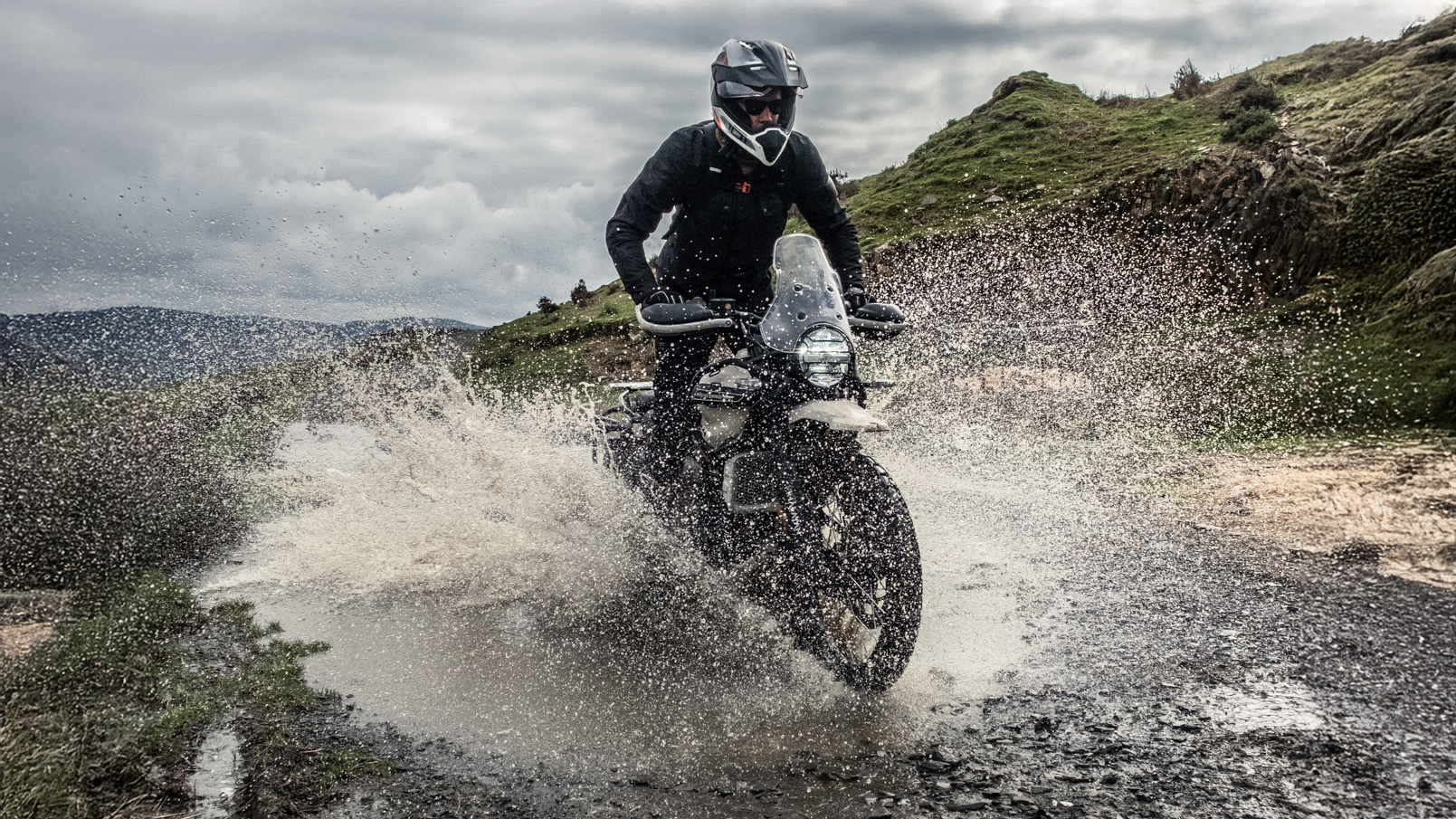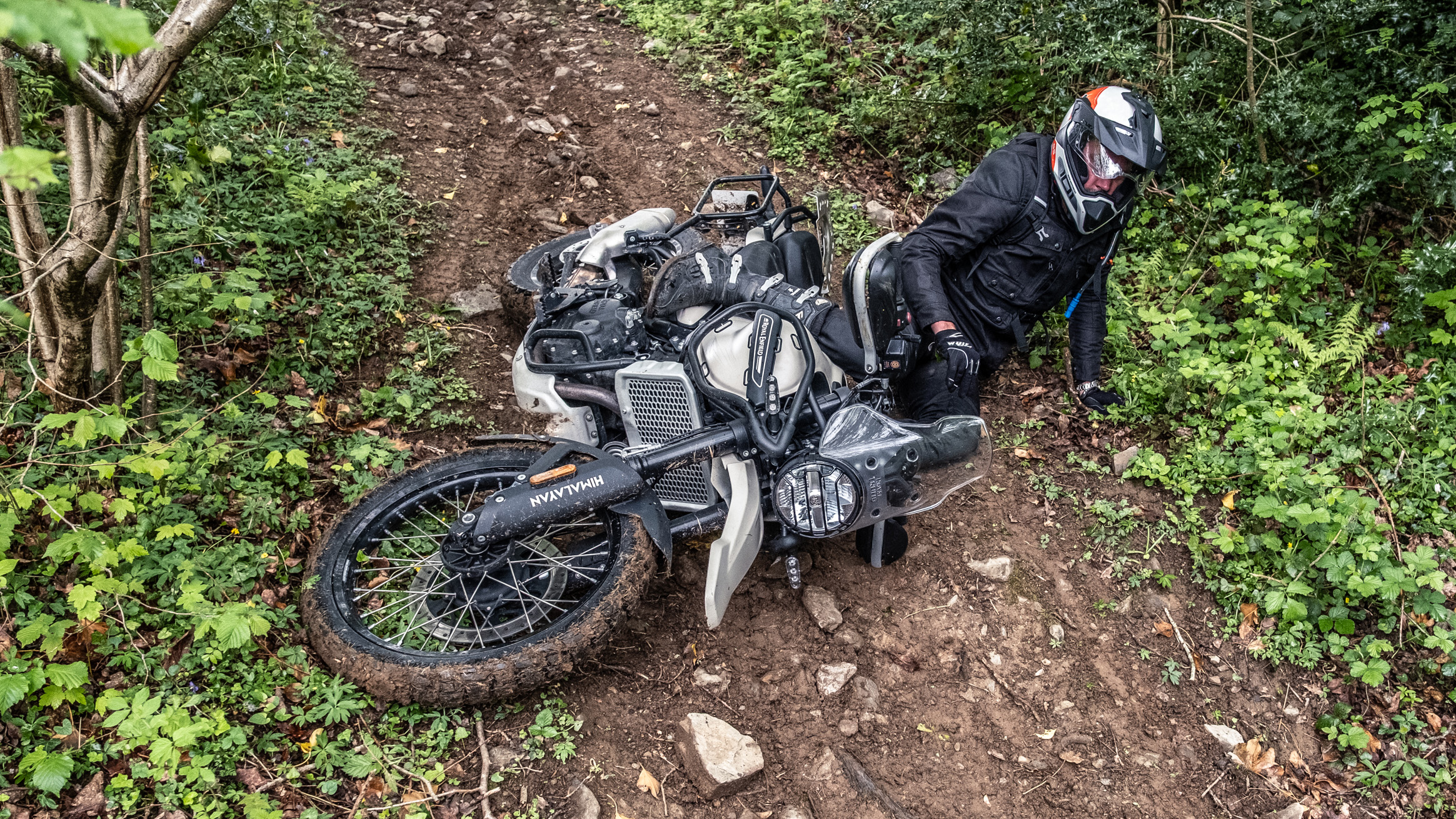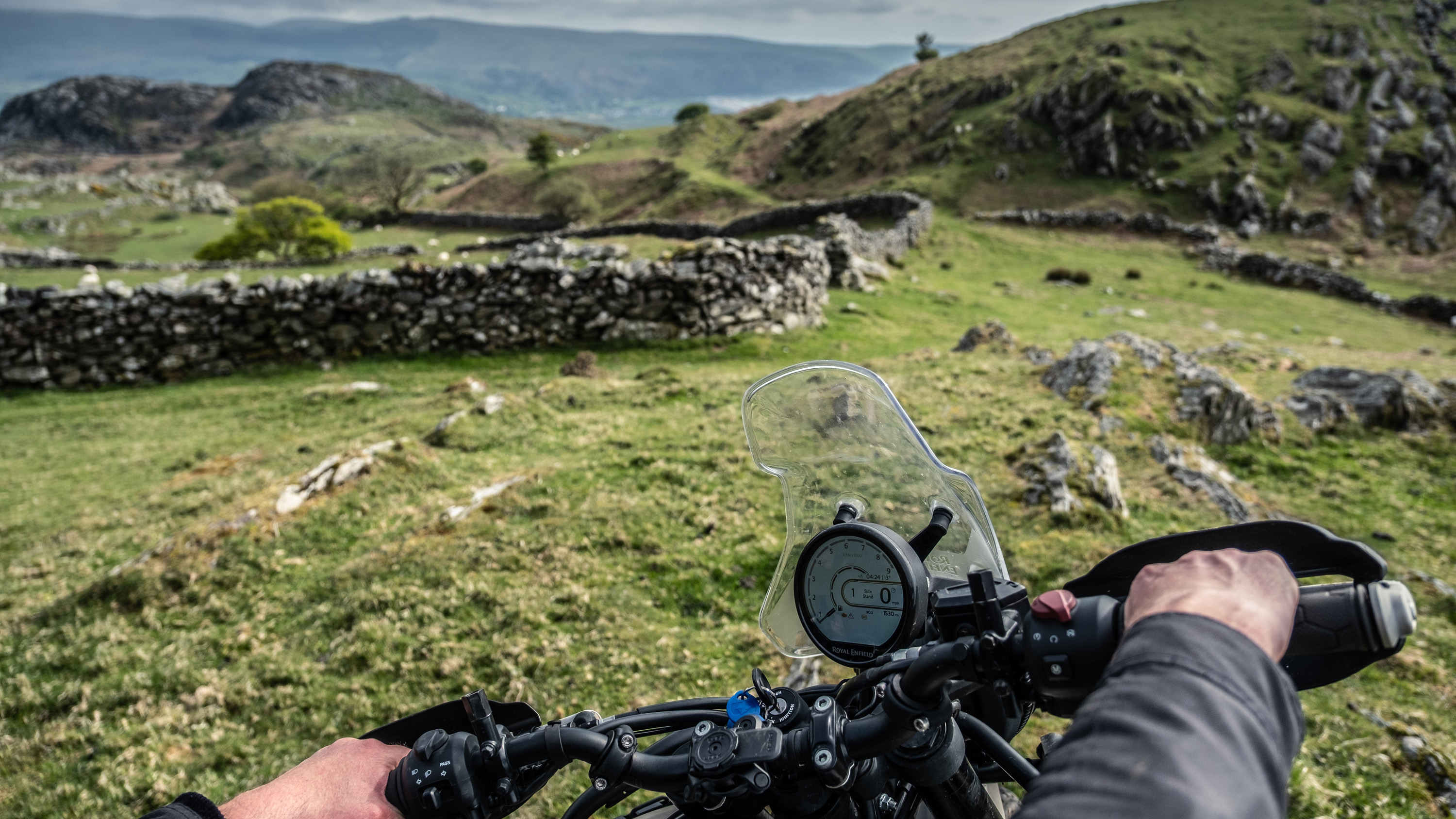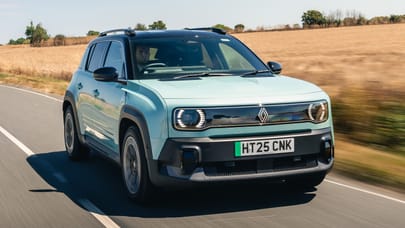
Royal Enfield Himalayan - long-term review
£5,750 / as tested £7,700 / PCM £99
Learning to ride (and fall off) a motorbike off-road
The intention with our Royal Enfield Himalayan is to use all its capabilities. And given it’s a budget off-road-ready adventure bike, it would be sensible if I could actually ride off-road so I can go on an adventure. Which I can’t. So I did something rarely seen in the wild among motorcyclists – I signed up to learn.
Our Himalayan has already proved itself as the two-wheeled pack horse I’d hoped for – an endearing, wobbly alternative to a car that munches miles and forgives sins as I filter through traffic. On sunny days it’s been a dream. Winter, we’ll see. But I trusted it enough to ride six hours west, slip off the motorway and into the emerald folds of Cymru where life on two wheels suddenly makes unshakeable sense compared to four. Especially with Wales’ new speed limits. Admittedly, by the time I reached Dolgellau my wrists buzzed like a dentist’s drill, my backside felt like a bruised peach, and my helmet had glued itself to my head. Still, I was grinning like a loon. Sunshine and a bike does that.
I’d come to meet Steph Jeavons – adventurer, former Honda instructor, and the first British woman to circumnavigate the globe on a motorbike (fun fact: she once winched into a dinghy to bob her way to Antarctica). She now runs MotoJunkies on what used to be a golf course near Barmouth – a splendid repurposing that swaps polite applause for the thwack of single-cylinders and the occasional clatter of toppled bikes, rather than golf bags. It’s a place for nervous novices like me and mud-coated trail hounds who live on the back wheel. As I’d find out, MotoJunkies was going to be part trail park, part therapy, part church of mechanical humility and physics reality for me.
Royal Enfield regularly sends riders here to learn to walk the walk when the tarmac ends – a kind of pre-expedition finishing school. And as we want to ride in the actual Himalayas, I’d come for a weekend to build the confidence I don’t have and to discover how much punishment both I and the Enfield could endure before one of us started to weep oil, tears – or both.
We started civilised – coffee, briefing, then kitting up in Kevlar and plastic that makes you look like you’re wearing guttering for garters. It works. The armour delivers instant bravery, as if your knees won’t crumble like rice crackers should you part company with the motorcycle. My instructors were Steve and Gareth – saintly patience, titanium nerves, and the unshakeable calm of men who have watched many motorcycles assume interesting new angles and their riders groan like sick cows when they hit the deck.
We set out to some wet grass and some cones. Within minutes my road-riding brain had to go in the bin. On tarmac you go with the bike, trust the grip, and fight gravity with subtlety. In mud you do the opposite: you move your body in ways you’ve never done, you let the bike slide, and you accept that gravity is a co-pilot. The faster you relax, the slower you fall.
Lesson one was the inevitable: the pick-up. Not my spirits – the bike. The Himalayan is the thick end of 200kg and, if you plan to misjudge anything ever, you’ll need a system. Back to the bike, one hand on the bar, the other on the grab rail, knees doing the heavy lifting, ego left out of it. I would, as foretold, get practice.
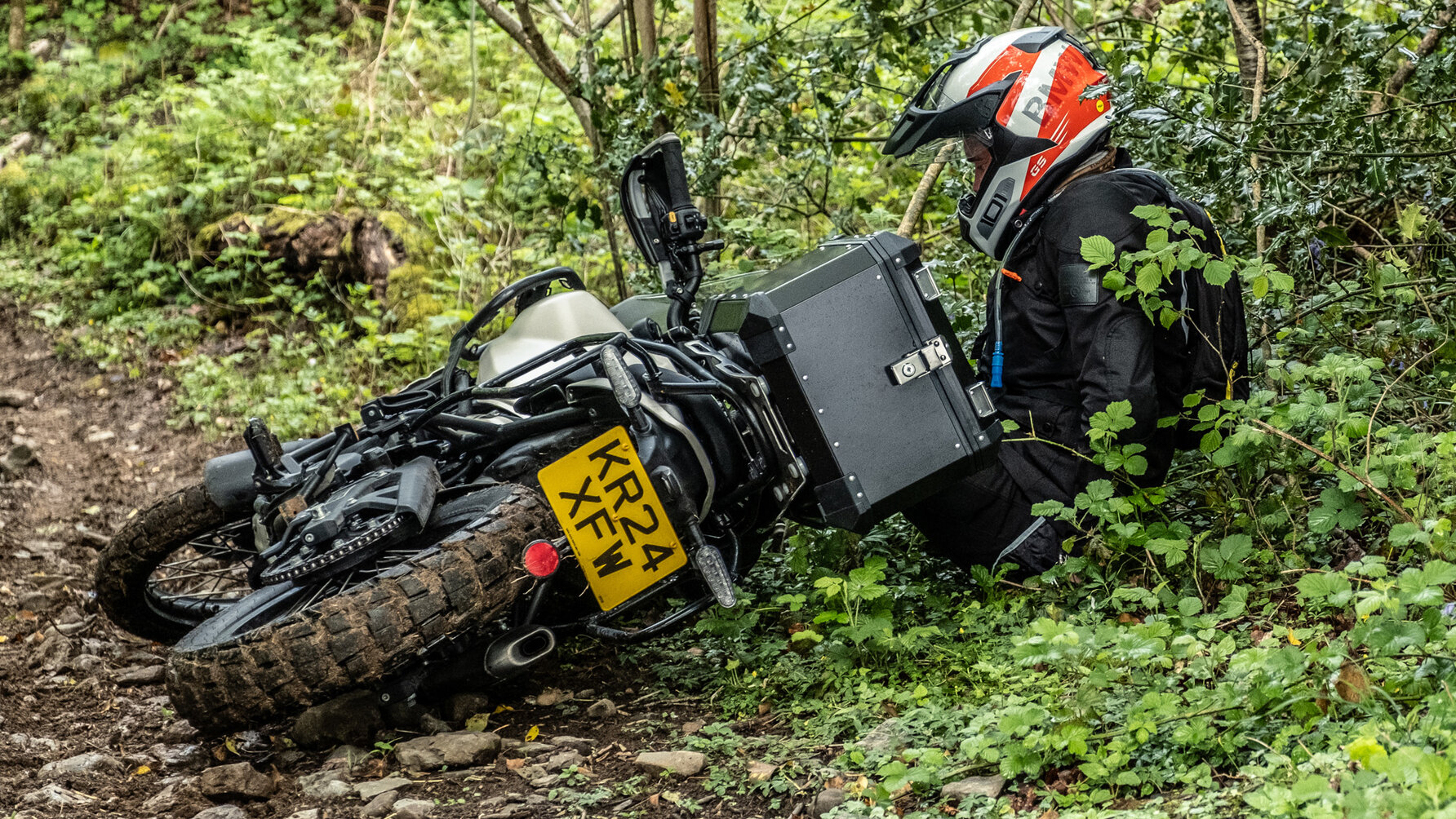
Then came balance and body position while manoeuvring at slow speed – seated, standing, and the wobbly purgatory between. Standing on the pegs feels absurd at first, like learning to surf in a farmer’s field, but it’s the bedrock of control off-road. Weight forward for climbs, back for descents, knees bent, elbows loose, jaw unclenched. The bike should dance beneath you while you remain serenely unruffled. Think swan in motorcross goggles – frantic feet below, calm above.
We moved on to lever control – the delicate duet of clutch and brake to keep traction on loose surfaces. On the road the clutch is for changing gear. Off-road it’s your traction control and your heartbeat. Feed it to find bite, feather it to keep the engine alive. It’s maddening at first, like patting your head, rubbing your stomach and doing your tax return all at once.
Out on the old fairways – damp grass, gravel rat runs, the odd bunker ready to swallow a front wheel – Steve preached the gospel of looking up. Stare at the front wheel and you’ll meet the ground. Look ahead and the bike sorts itself out. I didn’t believe him until, halfway down a steep muddy chute I stared at a rut right in front of me and fell off. Cause and effect seldom arrive so neatly labelled. Hill-recovery drills inevitably came next. Part ballet, part motorcycle rugby scrum. Lots of sweat.
By lunch the inside of my helmet was more warm goldfish bowl than head protection. I didn’t quite realise how enduro work was so physical – forearms bulge, thighs mutter and lungs complain – yet somewhere, faintly, a rhythm emerged. Stay loose, trust the throttle, accept the slide. Don’t fixate on targets.
After a morning on the golf course, I’d passed the entrance exam, because the afternoon promised “a little loop” with Steve, Gareth and Simon Thomas – part psychological hype man, part photographer, and a two-wheeled mountain goat. He’s properly handy. Not surprising given he and his wife have spent the last 17 years riding around the planet.
We climbed into the Mynydd Egryn area – rocky tracks, sheep paths, trickling streams, the landscape booby-trapped with traction-light surprises. Unlike the forgiving acreage of grass, here the margin for error was measured in toecaps and stone walls. “Watch the ruts,” Simon said. Toes tucked, boots in an arrowhead. Ruts love a lazy foot – they’ll grab it and try to snap your ACL like a rubber band.
The first climb was effectively a rock staircase. The Sherpa 450 engine – Enfield’s first liquid-cooled motor – thumped up with unfussed torque. Forty horsepower doesn’t read like bragging rights, but out here it’s plenty. The trick is relaxing enough to let the motorcycle do the job you allegedly bought it for, and trusting the semi-knobbly tyres to bite where your eyes tell them to.
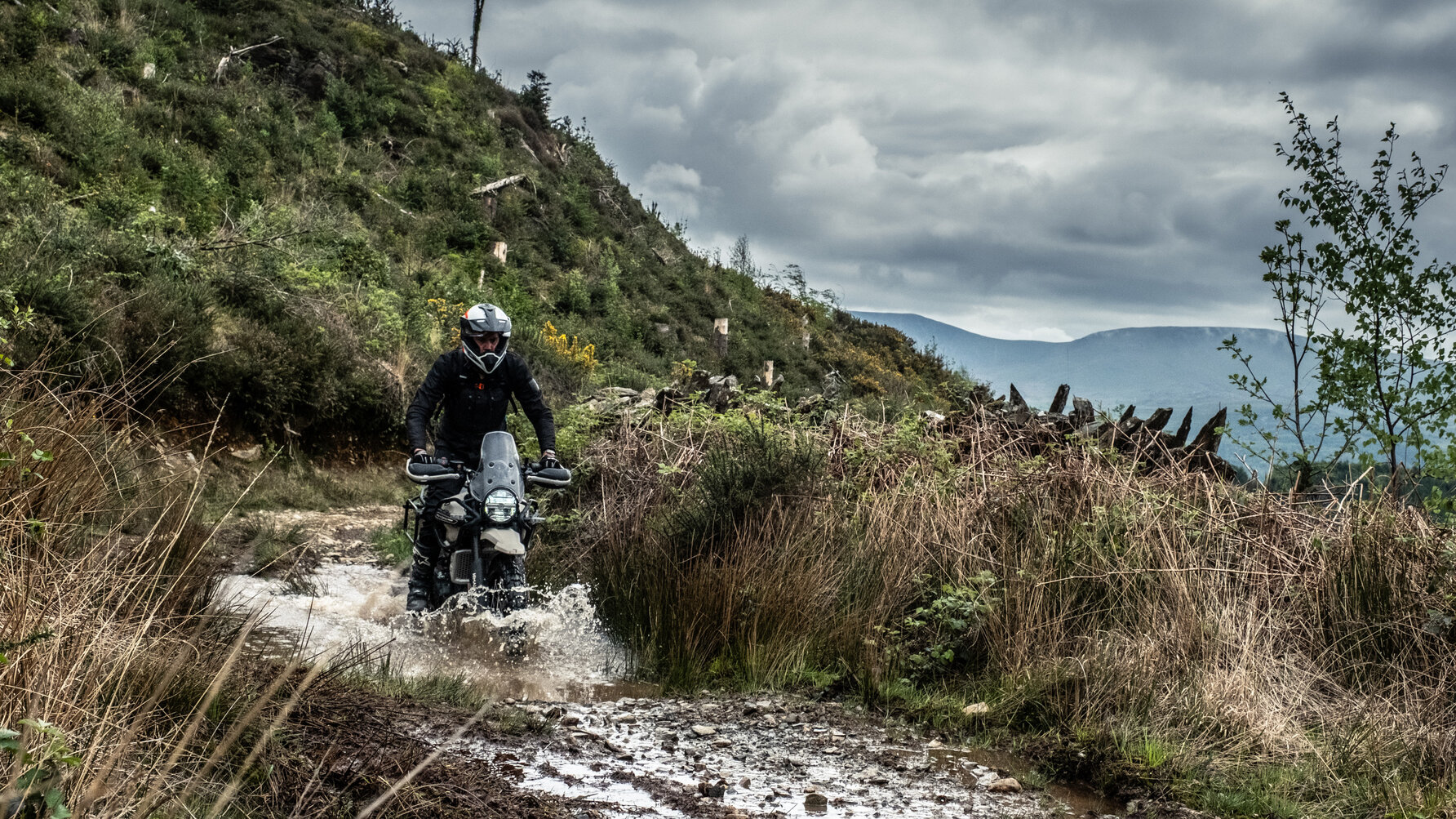
Going up was exhilarating. Going down was terrifying. Descending on loose rock is like skiing with handlebars – you steer with weight, not force. “Look ahead. Let it roll. Don’t pull the clutch,” Simon called. Naturally, I yanked the clutch in a panic – years of car driving have taught me to declutch at the first cough of a stall – which nuked all engine braking and sent me accelerating into a bush. And onto the floor. We tackled gullies, steep descents and narrow climbs where turning around simply didn’t exist. I dropped it again. Balls. Each time my phone buzzed with another “Bike Down” alert from the BikeTrac tracker I’d fitted to stop London thieves getting their hands on it – a slightly humiliating reminder that someone, somewhere, was monitoring my incompetence in real time. But the Enfield never sulked. Pick it up, bend the hand guards back, thumb the starter, and it thumped back into life with that familiar, stubborn single-cylinder rhythm.
For a “budget” adventurer the new Himalayan feels sorted. Stiffer frame than the old one, generous suspension travel, Showa forks that absorb thumps like pub carpet. I’d removed panniers and top box to lower the centre of gravity; without storage the bike went from commuter mule to mountain tractor. Also, it was marginally less likely to land on me like a wardrobe.
Steve and Gareth say panic is the enemy. They’re right. Fear tightens everything that needs to be loose. The minute I understood why the front pushed or the rear stepped out, a thread of confidence tugged itself through the day. On the ridge above Dolgellau I finally stopped for breath. Green on green to the sea, clouds snagged on slate peaks, the Enfield ticking hot beside me, mud-splattered and heroic. For a moment – just riding, not thinking – the whole thing made sense.
I went to bed knackered and morning arrived with a special ache I’d never felt. Then Gareth and Steve decided to test me. “If you’re not finding it hard, you’re not learning – this is training.” We headed from Abergynolwyn to Fairbourne the hard way – as the crow flies, stringing every trail we could across that fantastic landscape – proper Welsh green lanes riddled with puddles, gullies, boulders and slopes that look vertical until you realise you’re meant to go up them. Standing on the pegs, heart thumping, I looked where I wanted to be rather than where I feared I’d end up, and the bike often obliged.
I quickly realise the hardest work off-road lives between the ears. You have to believe you’ll make it up down across an obstacle before you do. The bike senses doubt. The terrain punishes hesitation. You can’t be tentative – not on mud, not on gravel, not on a narrow descent. By the afternoon I’d stopped fearing the drops. I even started enjoying the slides. For brief, glorious moments the bike and I were in sync.
We rolled over the toll bridge and into Barmouth for fish and chips by the sea, salt on lips and mud on boots, and planned one final route. It turned out to be the most exhausting – bigger rocks, an endless staircase of stones, and a last descent where I lost my bottle. I had a six-hour ride home, and it had to be done on the bike I was currently bouncing down a hill. Break the bike and I was up a creek without a paddle. We called it – before I or the Enfield expired.
By the time we clattered back into MotoJunkies I was shattered. My kit looked compostable. My arms barely worked. But I was smiling. Something had clicked. I’d stopped fighting the terrain and started listening to it. That’s the real lesson of off-roading: the bike knows more than you do. Panniers back on, body bruised, I sat down on the bike for the first time in two days and joined a motorway. Bliss. The Himalayan settled into a contented thrum, wearing its Welsh mud like medals and a few new modest dents like tattoos – the kind of patina an adventure bike should have. Back home I parked it, stepped away, and grinned. This isn’t just a long-term test bike any more. It’s a coach, a crash dummy and a therapist with a 17-litre tank.
Photography: Simon Thomas
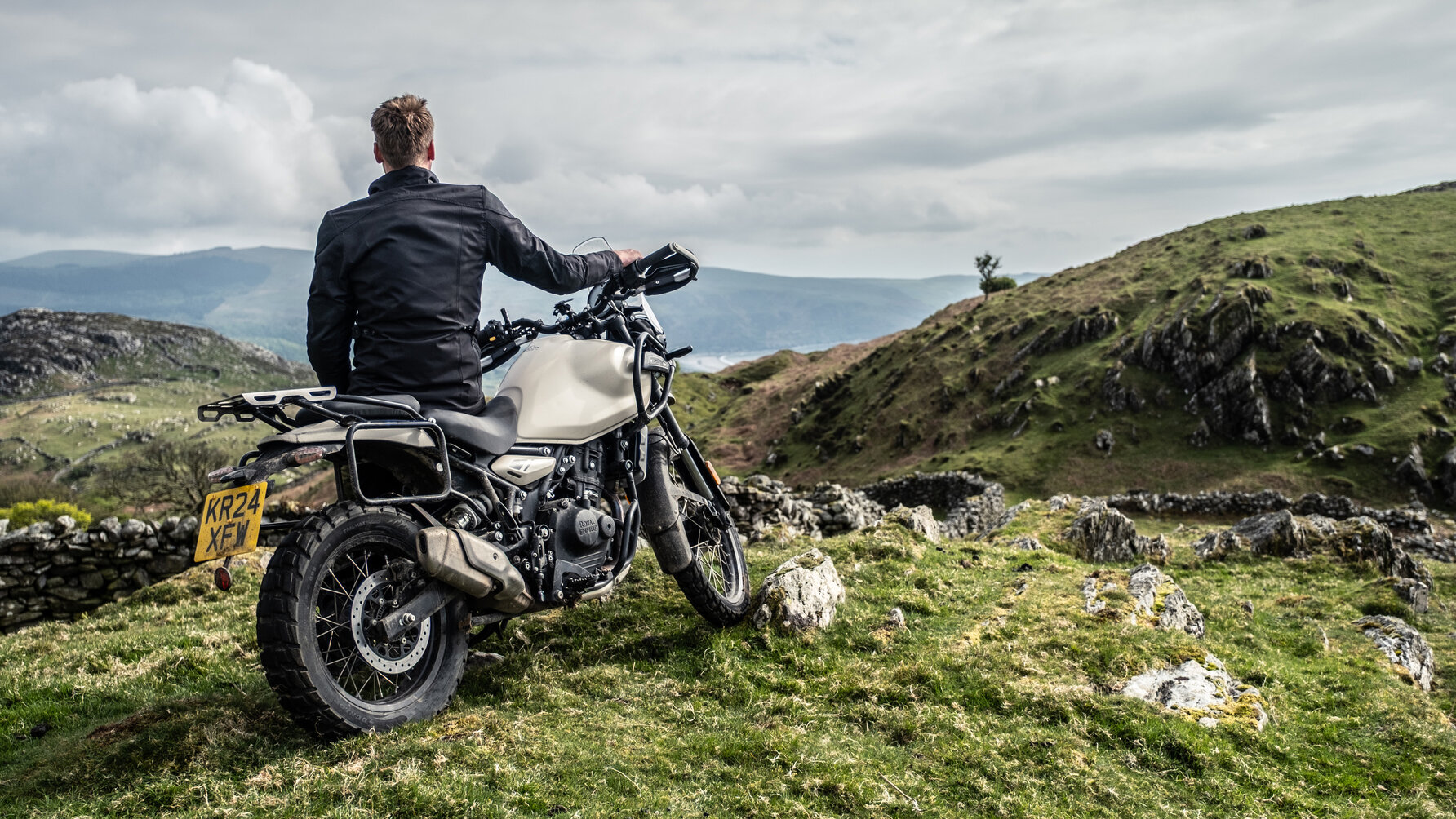
Featured

Trending this week
- Car Review
BMW 1 Series
- Top Gear's Top 9
Nine dreadful bits of 'homeware' made by carmakers




